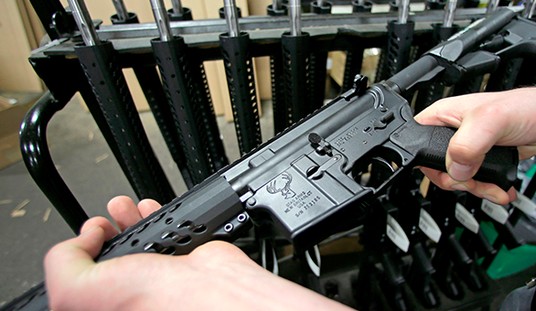When the topic of using shotguns for home-defense roles around, I repeatedly hear the same comment from gun store commandos and Internet know-it-alls.
“You don’t need to aim a shotgun. You just point it towards the bad guy and pull the trigger.”
Otherwise sane and intelligent people repeat this comment without ever questioning it. They’re laughably, demonstrably wrong.
Through some weird a quirk of fate, esteemed gun writer Tamara Keel and I just happened to be disproving that falsehood several states away from one another yesterday at the same time while working on two very different projects.
First, from Tam:
So, I decided to pattern some buckshot from my gauge yesterday. Keep this test in mind the next time you hear someone rambling on about how you don’t have to aim a shotgun because it spreads shot all over the place.
All these targets were shot at 30 feet, about the longest distance you could expect in an indoor residential setting, using a Remington 870 with the factory 20″ cylinder-bore barrel.
Go read her article, and look, really look, at the pictures of the resulting patterns. The widest spread of any load she fired was just seven inches.
Hundreds of miles away in North Carolina, I was doing my first round of load testing for a series of articles I’m working on. Like Tam, I’m shooting 00 buckshot loads, but for very different reasons we’ll discuss later.
I’m using Winchester’s common 9-pellet 00 buckshot (XB1200) as my “control” round. It’s representative of generations of buckshot with a simple wadding and basic pellets made of relatively soft lead. It’s “old tech,” like Winchester Silvertips are in hollowpoint handgun rounds.
By the way, I’m using a Mossberg 590A1 with a factory 18.5″ barrel and cylinder-bore as my test platform.

Unless you live in a relatively large home, your hypothetical across-the-room shot from a barricaded position is going to probably be about 15 feet or less. Both of the loads I tested at this distance created a “pattern”—if you can call a ragged hole a pattern—barely larger than the bore of the shotgun itself.

Some of you have larger rooms or hallways, and might need to take a shot from a distance of roughly 7 yards/21 feet.

The softer, unplated lead pellets of the Winchester load leads to the pellets deforming as the shot is fired, and leads to the pattern opening up relatively quickly. The Federal load, using the Flite Control wadding that helps the pattern stay together long and featuring harder, plated shot, was much tighter. The Winchester load had opened up dramatically in just six extra feet from 5 to 7 yards as the conventional wadding ripped away.
The Flite Control wadding is a whole other animal that simply slows down over distance as the shot column pulls away, leading to very tight patterns, especially up close.

The “long shot” at Tam’s home is 30 feet, while I’ve paced off the longest possible shot in my house—down a landing, over the kitchen bar, around the dining room to the front door—is just a hair longer. I think it’s fair to say that the longest shot in most homes is going to be at this distance, and will probably be closer.
So what did I see at ten yards? Patterns that showed even the soft lead rounds clearly needed to be aimed.

The soft lead XB1200 round from Winchester is relatively inexpensive, and throws a great pattern at in-home distances. I wouldn’t hesitate to use it for in-home self-defense. As you’ll see when I get to my article on using loads like this in a law enforcement, however, you’ll quickly understand why so many agencies are transitioning away from shotguns due to what they think the limitations of their shotguns are using these old loads. Once you get to a certain distance, limitations of the “old style” commercial and law enforcement ammunition make them impractical.

At these in-home distances, I don’t have what you’d typically think of as a “shotgun pattern” with the Federal LE127 00 loads. It instead is probably best described as a long-range contact wound. Tam made an even better analogy for the different Federal LE load she was firing, noting of the Le133 00 round, “you are essentially firing a single giant Glaser Safety Slug at indoor ranges.”
The evidence is plain to see, and right in front of you. Shotguns used at in-home distances are barely going to have any time for the shot column to separate from the shot cup or wadding before striking the target, and have much tighter patterns than most expect, even when using cylinder-bore shotguns.
Every shotgun is different, of course, and even shotguns of the same model from the same company firing shells from the same lot of ammunition may pattern differently.
Do not trust your life to what keyboard warriors have read or heard about shotguns.
Go and pattern your shotgun, with the load you plan to use, at the distances you would expect to use it.
*cover image courtesy of Tamara Keel, with permission.








Join the conversation as a VIP Member